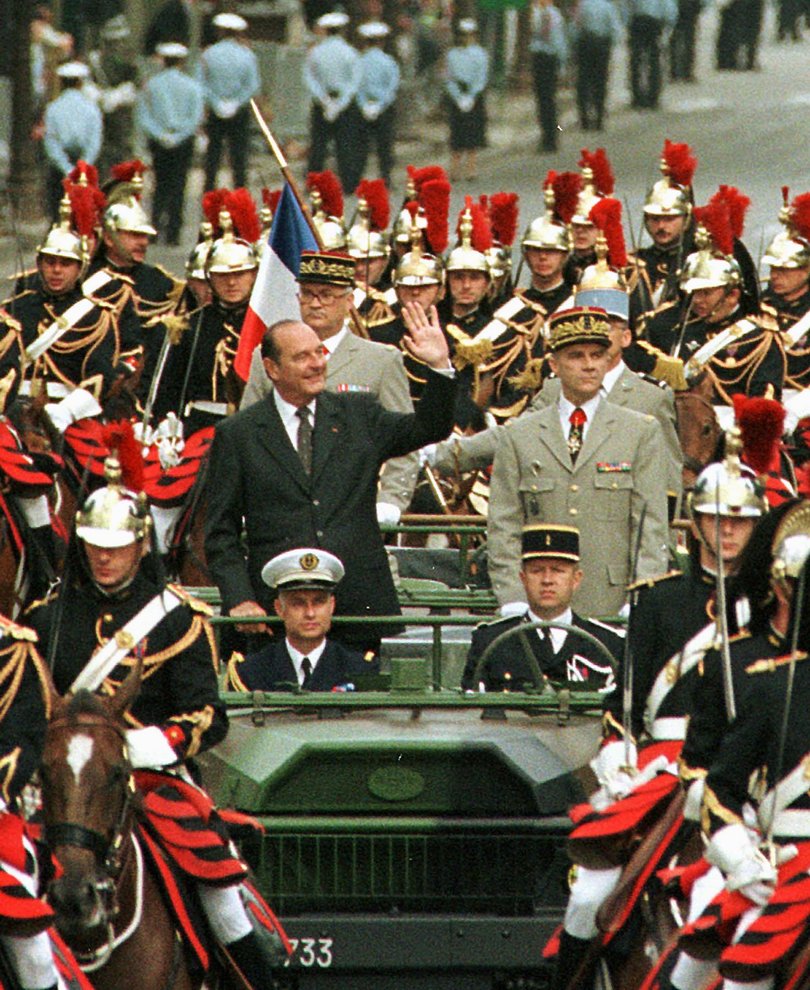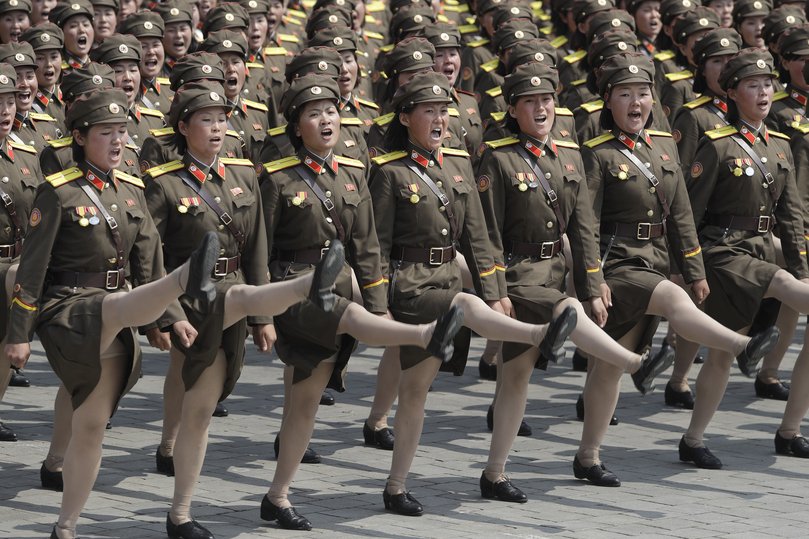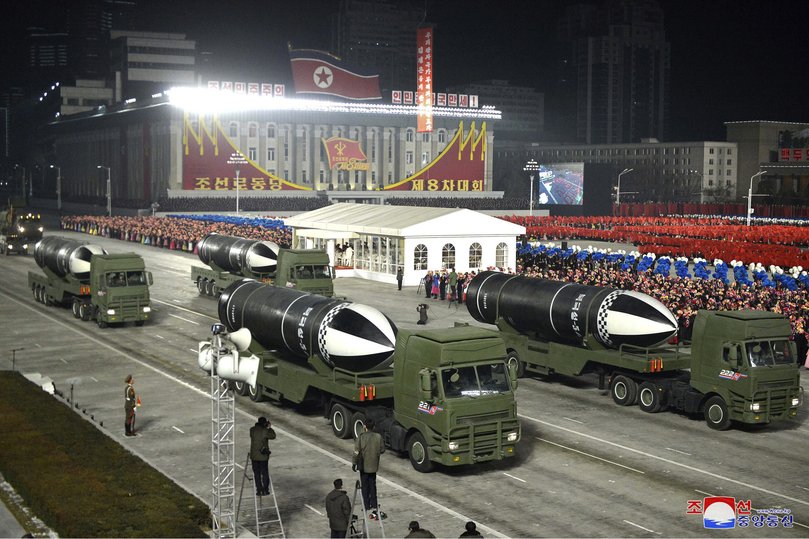How Trump’s military parade compares to others around the globe

President Donald Trump is set to realise, as he turns 79, one of his long-standing ambitions: to host a major military parade in Washington.
While the idea might be novel for many Americans, military parades are common spectacles in many parts of the world. Trump was so taken by France’s Bastille Day ceremonies in 2017 that he vowed to match or top them. “It was one of the greatest parades I’ve ever seen,” Trump told reporters of the French festivities.
Under authoritarian regimes and strong democracies, as part of centuries-old traditions or to celebrate new victories, uniformed soldiers, horses, tanks and even missiles roll down thoroughfares in displays of might bound up in power projection and national identity.
Sign up to The Nightly's newsletters.
Get the first look at the digital newspaper, curated daily stories and breaking headlines delivered to your inbox.
By continuing you agree to our Terms and Privacy Policy.“Americans aren’t used to seeing these kinds of parades,” said David Kieran, historian of war and society in contemporary US culture at Columbus State University in Georgia.
Ceremonial military reviews and parades celebrated wartime victories when the United States was a young republic through World War I, but the US doesn’t have a modern tradition of public military parades.
Since the end of World War II, the United States has put on only one major military parade: the National Victory Celebration in Washington after the 1991 Gulf War, under President George H.W. Bush. Troops marched and tanks rolled down Constitution Avenue.
Celebrations for the war lasted longer than the war itself, said David Fitzgerald, historian of the US military at University College Cork in Ireland.
The homecoming of Vietnam War veterans was generally subdued, amid roiling debates, political fights and social unrest over the draft and the war. The first Gulf War, and the military parade in the capital, “was the chance to say: America’s back and the American military’s back,” Fitzgerald said.
Around the world, parades tell national stories, he said.
“Any effort in memorialization is an effort to say this is who we are, this is what we believe, this what we value, these are the stories that matter to us … and help us understand how we’re going to engage with the rest of the world,” Kieran said.
Here are some notable military parades around the world:
France
France holds an annual military parade to celebrate Bastille Day, which commemorates the storming by revolutionaries in 1789 of the Bastille, an old fortress turned state prison that came to symbolize monarchical tyranny.
A tradition since 1880 and major focal point in the historical memory of the French revolutionary era, it’s the oldest and largest military parade in Europe - with about 6,500 people marching, 200 horses, 219 vehicles and almost 100 planes and helicopters. The tradition began after the country’s wars with Prussia, and served as a “reassertion of French military might,” Fitzgerald said.
The tradition serves a ceremonial purpose - but has also served diplomatic aims. In 2023, an Indian army contingent marched down the Champs-Élysées in the parade, before a crowd that included that year’s guest of honor, India’s Prime Minister Narendra Modi. The year prior, the parade served as a salute to Ukraine, five months after Russia invaded the country.
In 2017, Trump told a reporter he thought the parade was a “tremendous thing for France and for the spirit of France.”

Russia
Russia has commemorated Victory Day to celebrate the Soviet Union’s victory over the Nazis in the Second World War.
Soviet dictator Joseph Stalin initially downplayed the holiday, in the immediate wake of the massive Soviet death toll, but it grew into a major celebration and commemoration. For Russian President Vladimir Putin, it has served to project confidence with foreign leaders in attendance, even as supporters of Ukraine seek to isolate Russia.
In last month’s Victory Day parade, Moscow showcased Iskander ballistic missiles, rocket launchers and heavy flamethrower systems used in Ukraine. Nuclear-capable intercontinental ballistic missiles rolled through Red Square.

Britain
For more than 260 years, Britain has held a ceremony, including a parade, called Trooping the Colour, to celebrate the birthday of the monarch. In King Charles II’s first parade, 1,400 soldiers, 200 horses and 300 musicians took part.
This year’s parade is to take place the same day as Trump’s - which happens to fall on his birthday.
Trooping the Colour and similar displays of pageantry play a major role in the royal family’s image. They “realized that to survive, they needed to tie in with a lot of pomp and circumstance and to make themselves sort of visible to the public in that way,” Fitzgerald said.
North Korea
North Korea puts on heavily publicised military parades marking various events and holidays - including the founding of the military, the republic and the Workers’ Party of Korea. Sometimes, intercontinental ballistic missiles roll through Pyongyang. One parade in 2023 showcased at least 11 Hwasong-17 ICBMs.
“Our military powers have developed and evolved to an extent that no one else can dream of or amount to,” North Korean leader Kim Jong Un said at a parade in 2020, speaking from a new grand marble podium.


India
India holds its annual military parade on Republic Day, which celebrates the adoption of the Indian constitution. Barack Obama became the first U.S. president to attend in 2015.
China
Every decade, to mark the anniversary of Mao Zedong’s proclamation establishing the People’s Republic of China, the People’s Liberation Army and Chinese Communist Party put on a parade with 100,000 performers including thousands of soldiers.
In 2009, the parade included not just troop and equipment formations but also a “pageant” of grand floats surrounded by about 2,000 marchers, with themes such as “Struggling and Initiating,” “Scientific Development,” and “Brilliant Achievement.”
Iran
Iran hosts a military parade on “Sacred Defense Week,” marking the day Iraq started an eight-year war against Iran.
“This occasion offers a chance to reflect on the heroic sacrifices made by the brave individuals of our homeland, reminding everyone, particularly the youth, that the notion of global arrogance’s invincibility took shape shortly after the Islamic Revolution’s success,” the Iranian Armed Forces said ahead of last year’s ceremonies.

United States
Historically, the U.S. staged military parades “at the end of conflicts where there’s been a decisive victory,” Kieran said.
The Korean War, Vietnam War and the wars in Iraq and Afghanistan ended on terms that left Americans without a clear victory and raised questions among segments of the public about the role the US military in the world.
“They weren’t really events that lent themselves to the kind of celebratory environment that a parade creates,” Kieran said.
The 1991 welcome-home celebration parade after Operation Desert Storm included 8,800 people marching with Patriot missiles systems and Abrams tanks. Part of the $12 million festivities was a seven-block-long display of weaponry that helped defeat Iraq.
Saturday’s parade on Trump’s birthday is a celebration of the 250th anniversary of the U.S. Army.
“The military remains a deeply respected institution in American life,” Kieran said. But “recognition of the service member” is often “separated from the wars that those service members fight in.”
© 2025 , The Washington Post
